超越时空的文化建筑
黄鹤楼
第四章:超越时空的文化建筑——黄鹤楼
Chapter 4:Yellow Crane Tower—the cultural architecture across time and space
武汉是中国近代革命的“赤都”。
Wuhan is known as the “Red Capital” of Chinese modern revolution.
来到武汉,各处红色博物馆不能不逛。
When visiting Wuhan, one cannot miss the various “red museums”.
今天来自乌克兰和俄罗斯的朋友就将与我一起参观八七会议会址纪念馆。
Today, my friend from the Ukraine and Russia will join me in visiting the Site Memorial of BA QI HUI YI (August 7th Meeting).
黄鹤楼!我知道武汉的黄鹤楼!
Yellow Crane Tower! I know Wuhan’s Yellow Crane Tower!
这首诗看似写景,其中却蕴含了一个卓越的无产阶级革命家的无限革命豪情。
The poem may seem like a depiction of scenery, but it carries the boundless revolutionary enthusiasm of a remarkable proletarian revolutionary.
1927年春,青年毛泽东在距离黄鹤楼不到1公里的都府堤开办了中央农民运动讲习所。
In the spring of 1927, young Mao Zedong established the Central Peasant Movement Training Institute at Du fu Dyke, which is less than one kilometer away from the Yellow Crane Tower.
大革命失败时,毛泽东站在黄鹤楼遗址前望着滚滚长江,心头思绪万千。
After the First Revolutionary Civil War failed, Mao Zedong stood at the site of the Yellow Crane Tower, gazing at the surging Yangtze River, with a myriad of thoughts in his mind.
《菩萨蛮·黄鹤楼》这首词抒发了对革命前途沉重的忧虑,同时也表现了作者澎湃的革命激情和将革命进行到底的坚定信念。
The poem titled “Song of the Country Norm: Yellow Crane Tower” expresses his anxieties weighing on the bleak future of the revolution, while also portraying the poet’s surging revolutionary enthusiasm and unwavering conviction in carrying the revolution through to the end.
在此后召开的八七会议中,毛泽东在会议上首次提出了“枪杆子里面出政权”的著名论断,开始了中国共产党长达年22年的武装斗争历程。
At the subsequent August 7th Meeting, Mao Zedong first proposed the famous statement that “political power grows out of the barrel of a gun”, marking the beginning of the 22-year-long armed struggle of the Chinese Communist Party(CPC).
哇哦,没想到在这里还发生过这样的故事。
Wow! I didn’t expect that such a story had happened here.
黄鹤楼原址在湖北武昌蛇山上。
The original site of the Yellow Crane Tower is on Snake Mountain in Wuchang, Hubei.
传说有一位仙人跨黄鹤上云天,为纪念在此建楼。
Legend has it that there was an immortal riding a yellow crane flying into the sky and the tower was built here to commemorate him.
这种极富中国古典浪漫色彩的神话成为了中国古代诗人们的灵感来源,无数文人在此吟诗作赋,黄鹤楼也名扬天下。
This highly romanticized myth, deeply rooted in Chinese classical traditions, inspired ancient Chinese poets and countless literati to compose poems and essays here.
As a result, the Yellow Crane Tower gained fame throughout the country.
比如中国历史上大名鼎鼎的诗人李白,来到黄鹤楼看到长江江景后诗兴大发,却被另一位唐朝诗人崔颢留在这里的诗所折服而放下了笔。
For example, the renowned Chinese poet Li Bai, upon seeing the magnificent view of the Yangtze River from the tower, was filled with poetic inspiration. However, he was so impressed by the poem left behind by another Tang Dynasty poet Cui Hao that he put down his pen.
这段故事不仅成为了一段流传千古佳话,还是最近一部在中国国内大火的电影《长安三万里》的剧情,就这样,无数的中国年轻人也因此了解了这段发生在1300多年前的故事。
This story not only became a legend passed down through the ages but also had been featured in a recent film titled “Chang An” that is a big hit in China, allowing numerous young Chinese to learn about this story that took place over 1,300 years ago.
看来中国文化的传承,也离不开这样一篇篇诗词背后的故事。
It seems that the inheritance of Chinese culture is inseparable from the stories behind these poems and verses.
是的,黄鹤楼在过去1800多年中被毁掉了27次,但这些口口相传的故事却无法被磨灭。
Indeed, the Yellow Crane Tower has been destroyed twenty-seven times over the past 1,800 years, but these orally transmitted stories have been proven indelible.
武汉作为中国近代历史上就对外开放的城市,曾汇集了许多来自世界各地的文化和故事。
As a city that opened itself to the world in modern Chinese history, Wuhan has gathered many cultures and stories from all over the world.
因此也非常欢迎世界各地的朋友们探索这座城市,感受江城武汉的魅力。
Therefore,friends worldwide are also welcomed here to explore and feel the charm of Wuhan, the City on Rivers(Jiangcheng).
Extended Reading
文字里的黄鹤楼
武汉是一座有着悠久历史和优良革命传统的文化名城,声名远扬国内外。伟大的辛亥革命,毛泽东同志在武昌举办农民运动讲习所、党中央召开著名的“八七”会议等等都在这里发生。
大浪淘沙,沧海桑田。岁月洗淀了一批文化名胜遗址和革命纪念胜地,黄鹤楼便是其中一颗最为闪亮的明珠。
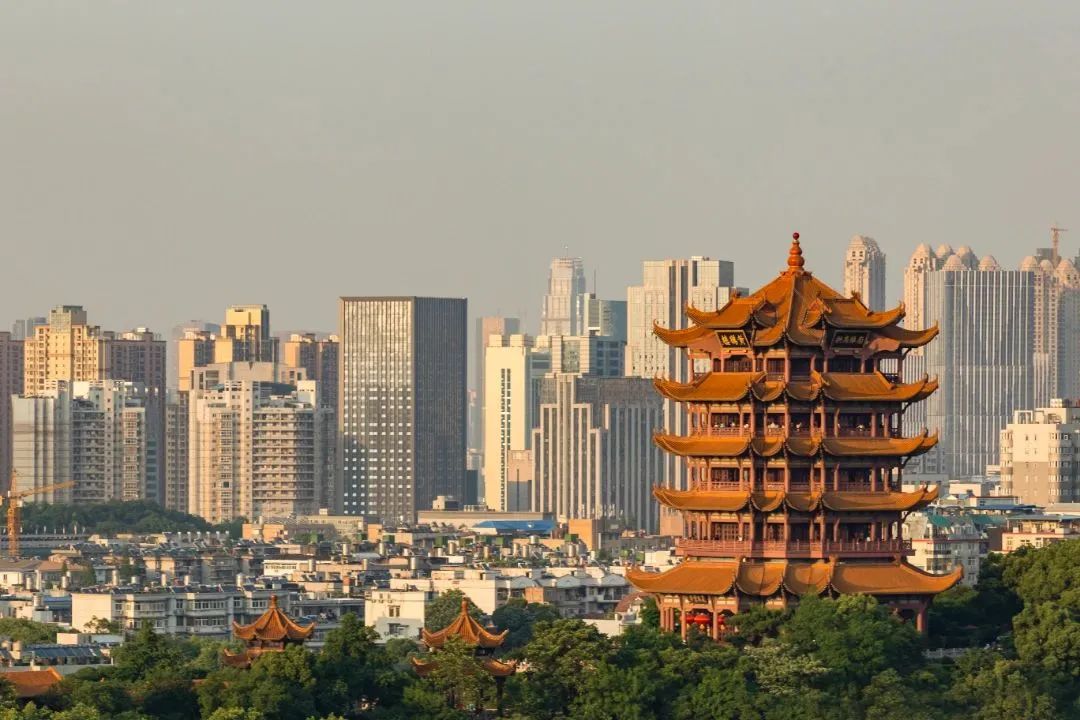
关于黄鹤楼的文字记载有许多,可追溯至三国时期。
吴黄武元年(222年),赤壁之战后,孙权夺取荆州,将统治中心自建业(今南京市)迁鄂(今鄂州市)。吴黄武二年(223年),孙权修筑夏口城,城“西南角因矶为楼,名黄鹤楼”。
宋大明六年(462年),鲍照做《登黄鹄矶》诗,此为迄今所见最早咏诵黄鹄矶的诗。
贞观十年(636年),黄鹤楼的称谓第一次载入正史。据当年撰成的《梁书》载:梁武帝的异母弟安成康王萧秀任野州刺史,因夏口常为战场,到处是战死者的骸骨,萧秀便命人将这些骸骨“于黄鹤楼下祭而埋之”。唐高宗显庆四年(659年)撰成的《南史》中也有类似记载。
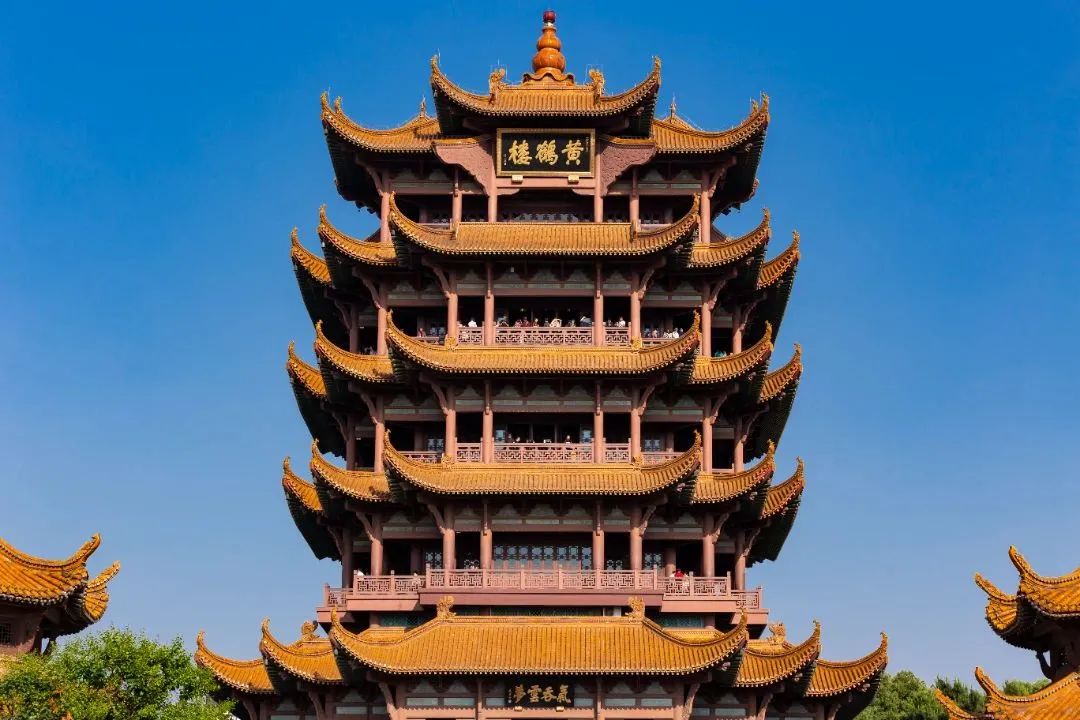
开元十一年(723 年),崔颢作《黄鹤楼》七律诗。该诗是咏黄鹤楼诗词中最负盛名的一首,为脍炙人口的千古绝唱。由于崔诗杰出的艺术成就,黄鹤楼因此又有“崔氏楼”之称。
开元十六年(728年),孟浩然岁暮由扬州返程回襄阳途经武昌,写下《溯江至武昌》诗。在此前后,孟浩然还借黄鹤楼抒发感情,作了《鹦鹉洲送王九之江左》等诗。
天宝十三年(754年),李白写成《送储邕之武昌》诗。此时距他初游武昌已三十余年。其间,李白写了大量与黄鹤楼有关的诗作,仅存世的即有《黄鹤楼送孟浩然之广陵》等16首,在历代咏诵黄鹤楼的诗人中可能是诗作最多的一位。

永泰元年(765年),阎伯理撰成《黄鹤楼记》。《黄鹤楼记》涉及黄鹤楼的传说地势形制、当时人物活动及感想诸方面,文简意明,流畅可诵,颇具文献价值。
元和十年(815年),白居易被贬江州途经武昌,登临黄鹤楼参加地方官员迎宴时,写下《卢侍御与崔评事为予于黄鹤楼置宴·宴罢同望》诗。
元祐年间(1086-1094 年),“南楼在郡治正南,黄鹄山顶,中间曾改为白云阁。元祐间,知州方泽重建”(南宋王象之《舆地纪胜》)。时有“鄂州南楼天下无”之赞。
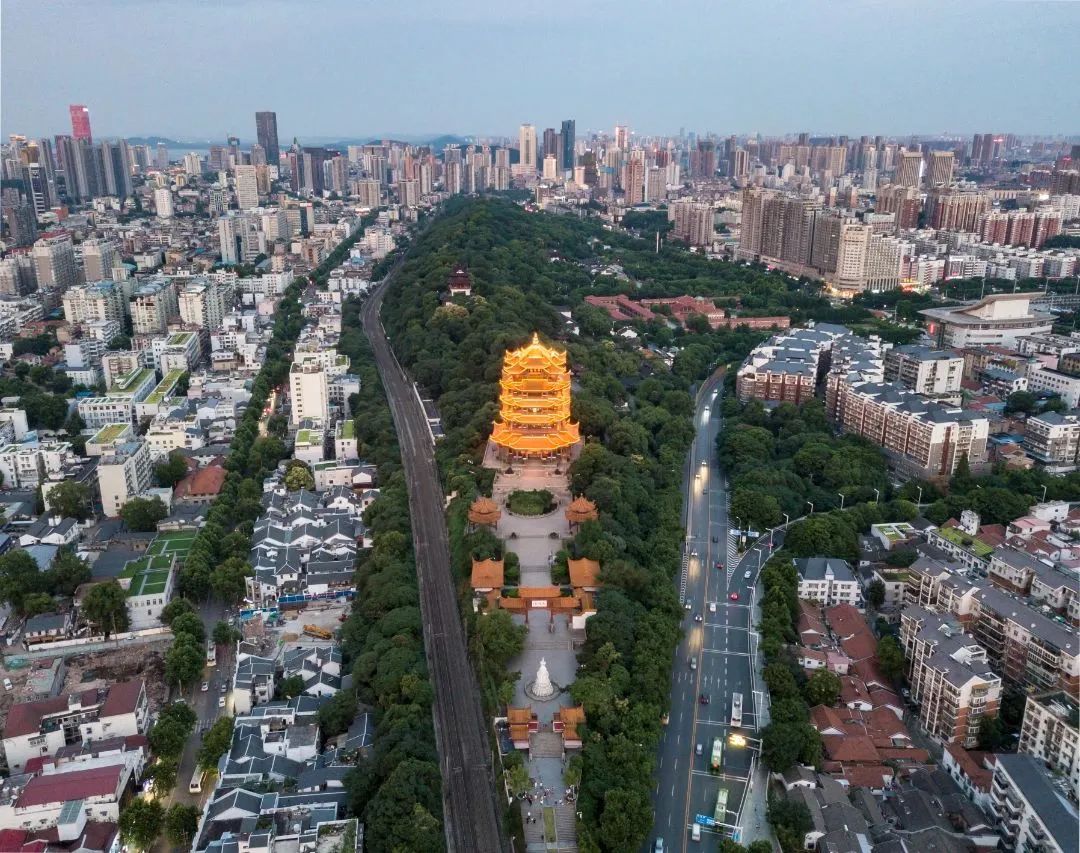
绍兴年间(1131-1162 年),游仪作《登黄鹤楼》诗。该诗脍炙人口,被誉为“宋诗绝唱”。游默斋曾书之于南楼,后又为之刻石立碑。
绍兴八年(1138 年),抗金名将岳飞再次“还军鄂州”时,填写《满江红·登黄鹤楼有感》词,抒发请缨杀敌,收复山河的壮志豪情。
乾道五年(1169年)陆游在其《人蜀记》中记:“黄鹤楼,旧传费祚飞升于此,后忽乘黄鹤来归,故以名楼,号为天下绝景。"《人蜀记》还记载了途经武昌登黄鹄山的所见所闻:“今楼已废,故址亦不复存。"提供了南宋初期黄鹤楼已实体不存的史料。
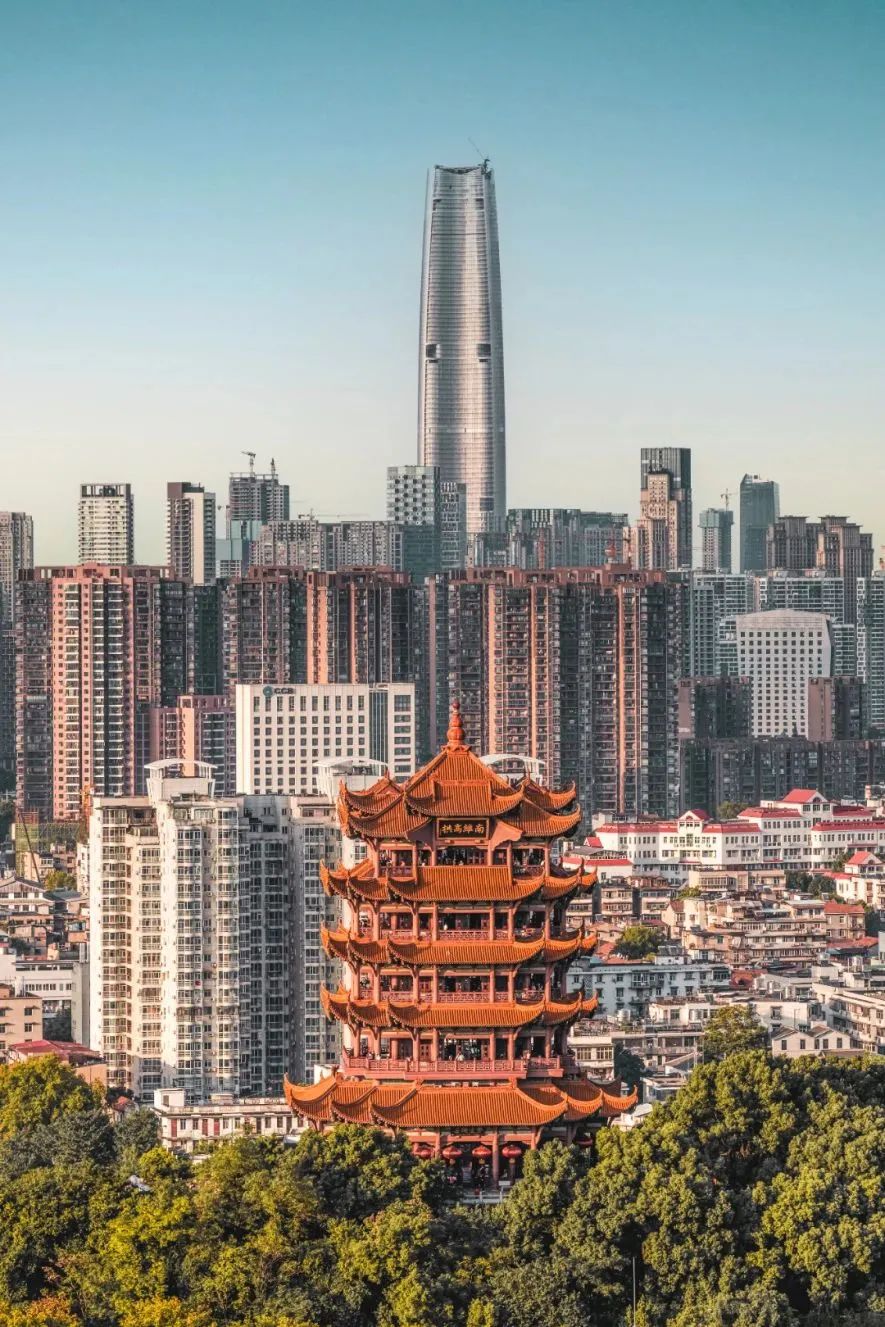
洪武四年至洪武十四年(1371一1381年),江夏侯周德兴主持湖广会城武昌的大规模拓展和建设。黄鹤楼在此次扩建中得以重建(修)。纵观黄鹤楼的历史发展,黄鹤楼可以说是屡建屡毁,光明清就毁了七次,早已不是最早的模样。
1927年春,大革命失败的前夕,毛泽东登上了黄鹤楼,一首《菩萨蛮·黄鹤楼》脱口而出:
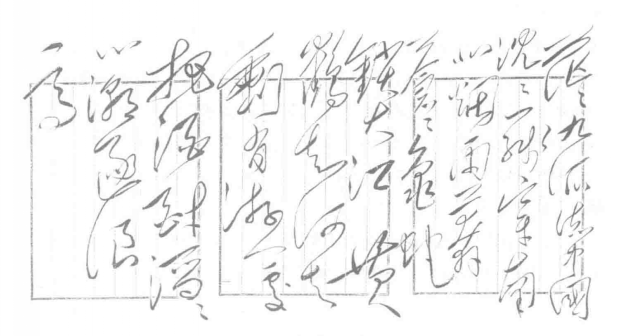
《菩萨蛮·黄鹤楼》
图片来源:《毛泽东的诗赋人生》
单从“茫茫”“沉沉”“苍苍”几个词,就能领略到毛泽东当时的心境。他在自注里写到:“一九二七年,大革命失败的前夕,心情苍凉,一时不知如何是好,这是那年的春季。夏季八月七号,党的紧急会议决定武装斗争从此找到了出路。”
黄鹤楼最终能传承至今,不可不说是一个奇迹。无数文人墨客在此留下了珍贵的文化遗产,它不仅是中国文化的瑰宝,更是中华文明的象征。
黄鹤楼的故事,还在继续,后面的故事,就由大家来写了。
资料来源:
[1]张国保,余楚民编著. 黄鹤楼. 武汉:武汉出版社, 2001.10
[2]金冬瑞编著. 黄鹤楼. 长春:吉林文史出版社, 2010.01
[3]曾珺著. 毛泽东的诗赋人生. 北京:中国言实出版社, 2019.06.
END
视频:李欣桐
编辑:冯天
责编:李岚
审核:荆菁
终审:赵丽
